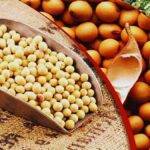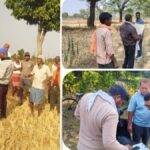Main Points In Hindi (मुख्य बातें – हिंदी में)
-
खाद्यान्न का रिसाव: इक्रियर द्वारा किए गए अध्ययन के अनुसार, भारत के सार्वजनिक वितरण प्रणाली (पीडीएस) में खाद्यान्न का रिसाव लगभग ₹69,108 करोड़ है, जो लगभग 20 मिलियन टन अनाज के बराबर है, और इसका लगभग 28 प्रतिशत अनाज कभी भी लाभार्थियों तक नहीं पहुंचता।
-
सुधार की आवश्यकता: अध्ययन में कहा गया है कि भारत की पीडीएस में रिसाव को कम करने के लिए तत्काल सुधार की आवश्यकता है, ताकि खाद्य सुरक्षा के अलावा पोषण सुरक्षा के लिए भी संसाधनों का पुनर्निवेश किया जा सके।
-
डिजिटलीकरण के प्रयास: केंद्र सरकार ने पीडीएस में रिसाव को रोकने के लिए डिजिटलीकरण के कई कदम उठाए हैं, जिसमें आधार के द्वारा बायोमेट्रिक प्रमाणीकरण और "वन नेशन वन राशन योजना" का कार्यान्वयन शामिल है।
-
नकद हस्तांतरण का सुझाव: इक्रियर अध्ययन ने नकद हस्तांतरण के विकल्पों की ओर धीरे-धीरे बदलाव की सिफारिश की है, जबकि सरकार ने इस सुझाव को स्वीकार नहीं किया और वितरण के लिए वर्तमान प्रणाली को बनाए रखा है।
- अनाज का वितरण: राष्ट्रीय खाद्य सुरक्षा अधिनियम के तहत, प्रत्येक लाभार्थी को हर महीने 5 किलो अनाज प्राप्त करने का अधिकार है, लेकिन अध्ययन के अनुसार, रिसाव के चलते यह सुनिश्चित नहीं होता कि सभी लाभार्थियों तक अनाज समय पर पहुंचे।
Main Points In English(मुख्य बातें – अंग्रेज़ी में)
Here are the main points from the article regarding the leakage in India’s Public Distribution System (PDS):
-
Estimated Leakage Costs: The study by the policy advocacy group ICRIER estimates that leakage from the government’s distribution of free food grains to over 810 million people amounts to approximately ₹69,108 crore, which is equivalent to around 20 million tons of rice and wheat.
-
Distribution Inefficiencies: The research highlights that about 28% of the grain supplied by the Food Corporation of India (FCI) and state governments never reaches the intended beneficiaries, emphasizing the urgent need for reforms to improve the effectiveness of the PDS.
-
Digitalization Efforts: The government has taken several steps towards digitization, including biometric authentication through Aadhaar. This initiative aims to enhance the distribution process, as seen in the One Nation One Ration scheme, allowing beneficiaries to access grains from any ration shop in the country.
-
Recommendations for Cash Transfers: The report suggests shifting from grain-centric distribution to cash transfer options to minimize leakage and improve efficiency. However, the government has not fully embraced these recommendations, leaving decisions about cash transfers to the states.
- Current Coverage and Challenges: The current PDS enables beneficiaries to receive 5 kilograms of grain per month under the National Food Security Act. Despite improvements, issues with leakage remain a concern, indicating that while beneficiaries might be receiving resources, inefficiencies still exist within the system.


Complete News In Hindi(पूरी खबर – हिंदी में)
केंद्र द्वारा 81 करोड़ से अधिक लोगों को मुफ्त वितरित किए गए खाद्यान्न के रिसाव का अनुमान लगभग ₹69,108 करोड़ है। नीति वकालत समूह इक्रियर द्वारा जारी “भारत में सार्वजनिक वितरण प्रणाली को युक्तिसंगत बनाना” नामक एक अध्ययन के अनुसार, यह लगभग 20 मिलियन टन (एमटी) चावल और गेहूं के बराबर है।
राया दास, रंजना रॉय और अशोक गुलाटी द्वारा लिखित, अध्ययन में 2022-23 घरेलू उपभोग व्यय सर्वेक्षण (एचसीईएस) का हवाला दिया गया और बताया गया कि भारतीय खाद्य निगम (एफसीआई) और राज्य सरकारों द्वारा आपूर्ति किया गया लगभग 28 प्रतिशत अनाज कभी नहीं पहुंचा। इच्छित लाभार्थी.
यह स्वीकार करते हुए कि भारत दुनिया में सबसे बड़ी सार्वजनिक वितरण प्रणाली (पीडीएस) चलाता है, उसने कहा: “इस तरह की लीकेज वाली पीडीएस में बेहतर परिणामों के लिए तत्काल सुधार की आवश्यकता है। इस प्रकार बचाए गए संसाधनों को न केवल खाद्य सुरक्षा बल्कि पोषण सुरक्षा प्राप्त करने के लिए कृषि और ग्रामीण क्षेत्रों में वापस लगाया जा सकता है।
केंद्र की पहल
इक्रियर अध्ययन में शांता कुमार समिति (एफसीआई की भूमिका और पुनर्रचना पर) के निष्कर्ष का हवाला दिया गया है, जिसमें अखिल भारतीय स्तर पर पीडीएस रिसाव का अनुमान 46 प्रतिशत और कुछ उत्तर में 70 प्रतिशत तक था। पूर्वी राज्य. पैनल, जिसमें गुलाटी (वर्तमान इक्रियर अध्ययन के लेखकों में से एक) भी सदस्य थे, ने 2015 में लीकेज को रोकने के लिए सिस्टम का एंड-टू-एंड डिजिटलीकरण किया था।
उसके बाद, केंद्र डिजिटलीकरण के लिए आधार के माध्यम से बायोमेट्रिक प्रमाणीकरण सहित कई कदम उठा रहा है। खाद्य मंत्रालय के अधिकारियों ने कहा कि वन नेशन वन राशन योजना की शुरूआत डिजिटलीकरण के कारण ही संभव हो सकी है क्योंकि लाभार्थियों को अब देश में किसी भी राशन की दुकान से अनाज खरीदने की अनुमति है।
इक्रियर अध्ययन में कहा गया है, “पीडीएस के लिए लाभार्थियों के राशन कार्ड को आधार से जोड़ने से वितरण की प्रभावशीलता बढ़ गई है। हालाँकि, पीडीएस में रिसाव अभी भी चिंता का विषय बना हुआ है। उन्हें पूरी तरह से प्लग नहीं किया गया है।”
शांता कुमार समिति ने मौजूदा 67 प्रतिशत कवरेज को घटाकर 40 प्रतिशत करने और दक्षता में सुधार, रिसाव को कम करने और विविध आहार को प्रोत्साहित करने के लिए अनाज-केंद्रित वितरण के बजाय नकद हस्तांतरण विकल्पों की ओर धीरे-धीरे बदलाव की सिफारिश की थी।
वितरण खिड़की
हालाँकि, सरकार ने नकद हस्तांतरण के सुझाव को स्वीकार नहीं किया और इसे राज्यों पर निर्णय लेने का विकल्प छोड़ दिया और इसके लिए बहुत उत्साह नहीं है। खाद्य मंत्रालय के एक पूर्व शीर्ष अधिकारी ने कहा, ”जब तक सरकार चावल और गेहूं की खरीद प्रणाली जारी रखती है, उसे इसके वितरण के लिए एक खिड़की की भी जरूरत है और पीडीएस इसके लिए सबसे उपयुक्त है।” उन्होंने कहा कि कैश ट्रांसफर का सुझाव अच्छा है, लेकिन फिलहाल कोई विकल्प नहीं है.
पीडीएस में, राष्ट्रीय खाद्य सुरक्षा अधिनियम के तहत प्रत्येक लाभार्थी हर महीने 5 किलो अनाज (उपलब्धता के आधार पर एक या चावल या गेहूं के संयोजन में) प्राप्त करने का हकदार है।
आधिकारिक सूत्रों ने कहा कि चूंकि अध्ययन में 2022-23 की अवधि का उल्लेख किया गया है, इसमें से लाभार्थियों को 9 महीने (अप्रैल-दिसंबर 2022) के लिए प्रति माह 10 किलोग्राम प्राप्त हुआ और यह संभव है कि कुछ ने इसे प्राप्त करने के बाद कुछ अनाज बेच दिया हो, जो है ऐसा नहीं है कि लाभ उन तक नहीं पहुंच रहा है।
Complete News In English(पूरी खबर – अंग्रेज़ी में)
The central government has estimated a loss of over ₹69,108 crore from food grain leaks in its distribution system, which affects more than 81 crore people. According to a study titled “Streamlining the Public Distribution System in India,” published by the advocacy group ICRIER, this amount is roughly equivalent to 20 million tons (MT) of rice and wheat.
The study, authored by Raya Das, Ranjana Roy, and Ashok Gulati, references data from the 2022-23 Household Consumption Expenditure Survey (HCES) and indicates that nearly 28% of grains supplied by the Food Corporation of India (FCI) and state governments do not reach the intended beneficiaries.
Recognizing that India operates the world’s largest public distribution system (PDS), the report states that urgent reforms are necessary for better outcomes amid such leaks. The resources saved from these leaks could be reinvested in agriculture and rural areas to enhance food and nutritional security.


The ICRIER study also cites findings from the Shanta Kumar Committee regarding FCI’s role and restructuring, which estimated public distribution system leaks to be as high as 46% nationally, reaching 70% in some northern and eastern states. The committee recommended implementing end-to-end digitization of the system to prevent leaks.
Following these recommendations, the government took several steps toward digitization, including biometric authentication through Aadhaar. According to food ministry officials, the launch of the One Nation One Ration scheme has been made possible through digitization, allowing beneficiaries to access grains from any ration shop across the country.
The study highlighted that linking beneficiaries’ ration cards to Aadhaar has improved distribution effectiveness, although leaks remain a significant concern that hasn’t been fully addressed.
The Shanta Kumar Committee suggested reducing the current coverage of 67% to 40% while transitioning towards cash transfer options instead of grain-centric distribution to improve efficiency, reduce leaks, and promote diverse diets.
However, the government has not embraced the cash transfer suggestion and prefers to leave decisions to the states, showing a lack of enthusiasm for this approach. A former senior official from the food ministry noted that as long as the government continues to procure rice and wheat, a distribution mechanism like the PDS is necessary. While cash transfers may be a good idea, no viable alternative currently exists.
Under the PDS, each beneficiary is entitled to receive 5 kg of grains per month under the National Food Security Act, depending on availability, consisting of either rice or wheat or a combination of both.
Official sources indicate that since the study focuses on the 2022-23 period, beneficiaries received 10 kg of grains per month for nine months (April to December 2022), and it’s possible some may have sold part of the grains received, meaning they are not entirely missing out on benefits.
Source link




